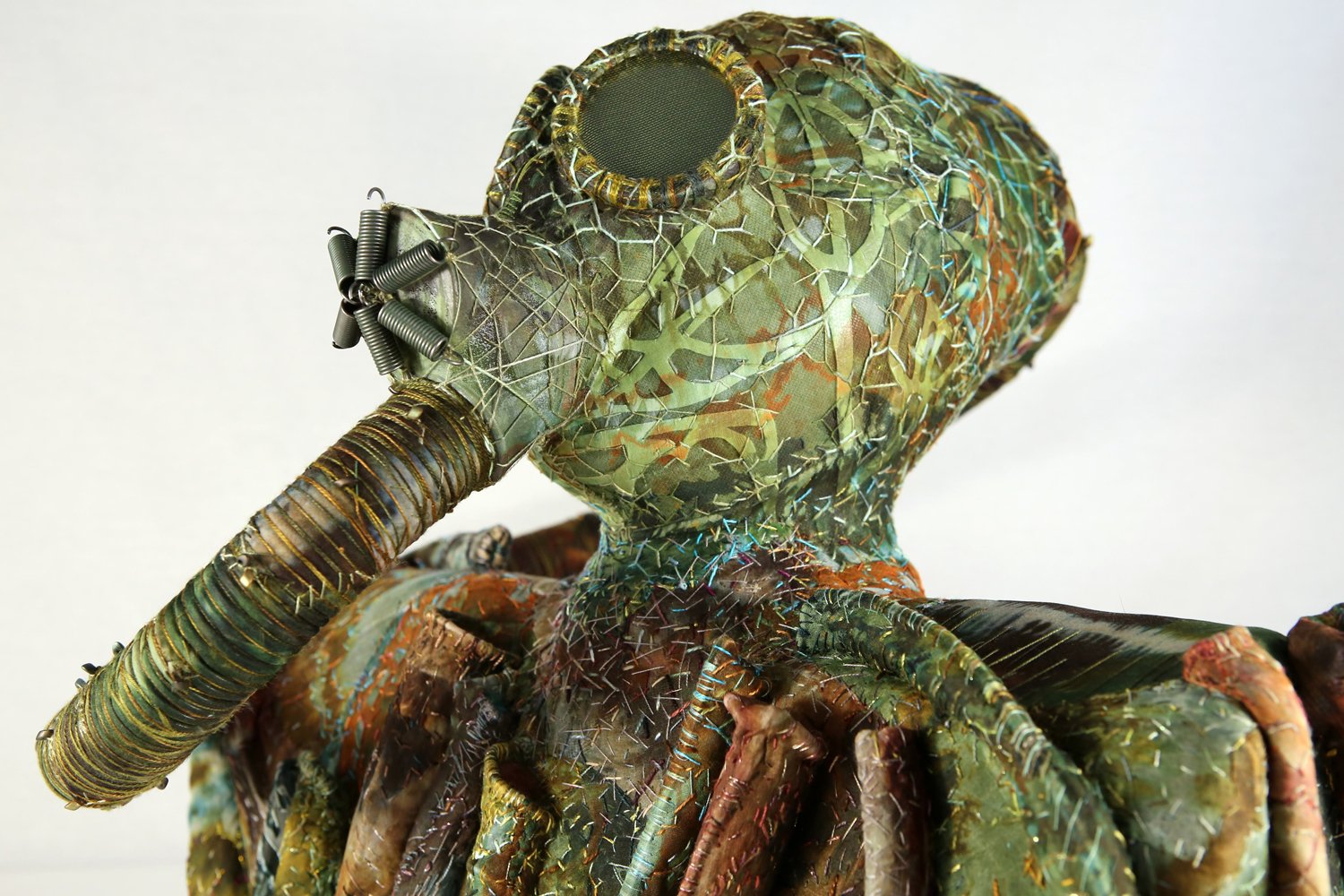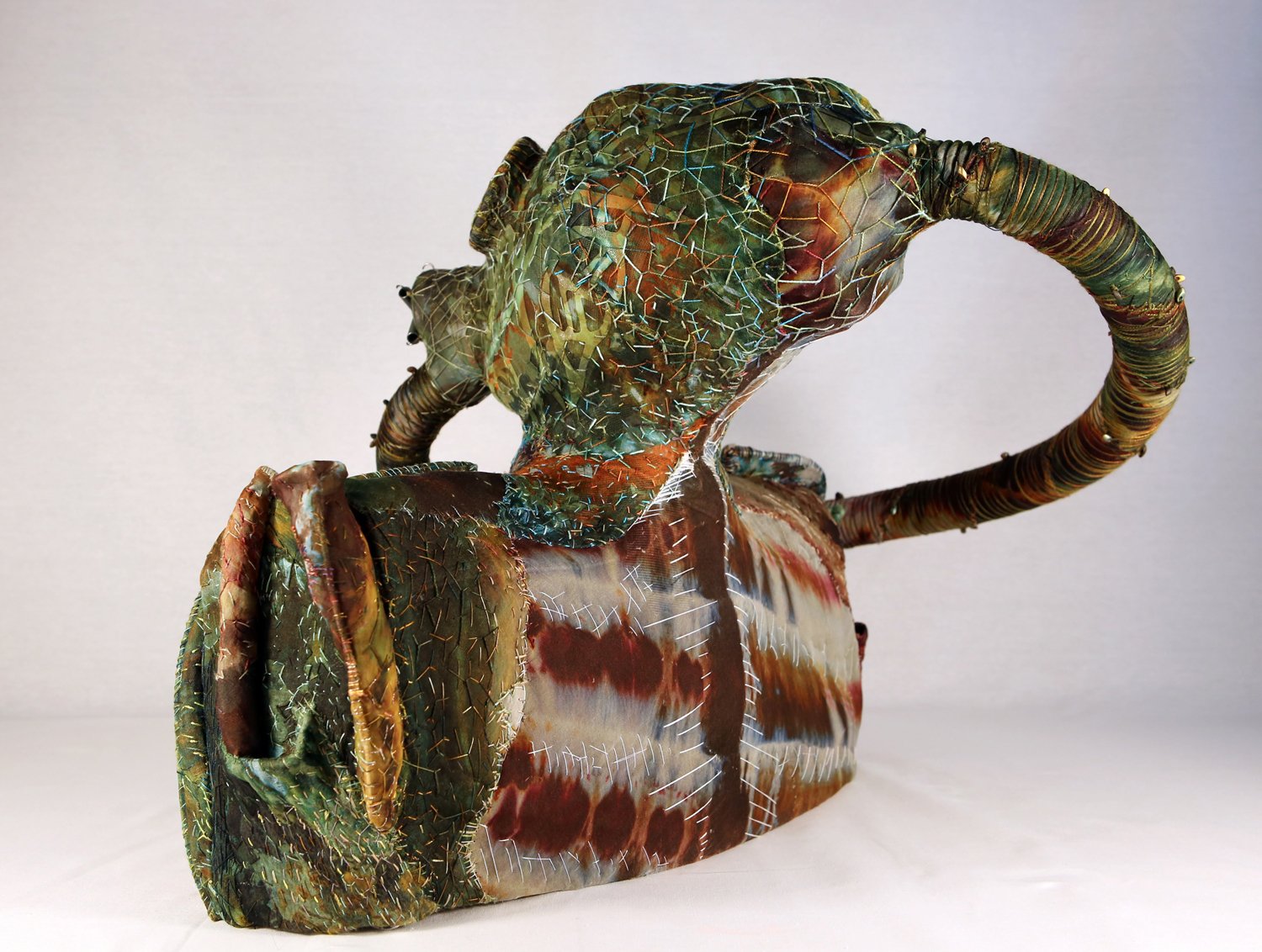At our recent CFG Stitch Group meeting we discussed what to do with the fabric you have ice dyed. Often one finds fabric too precious to use and will allow it to linger waiting for the perfect idea. I prefer to come up with an idea and then create the fabric.
©2024 Amanda Snavely
For my current design, I need yardage in similar color organic patterns. Ice-dyeing yardage provides a large background color pallet to use as is, cut, or overlay with other surface design methods.
©2024 Amanda Snavely
Working with yardage can be cumbersome but it is helpful when you need the flexibility of larger sections.
The yardage is a background layer of color, texture and pattern that will be painted, cut, and manipulated many times during the design process. Before I whip out my rotary cutter and paint I take a before photo of a couple of potential sections.
Crank up the music and the fun begins.














